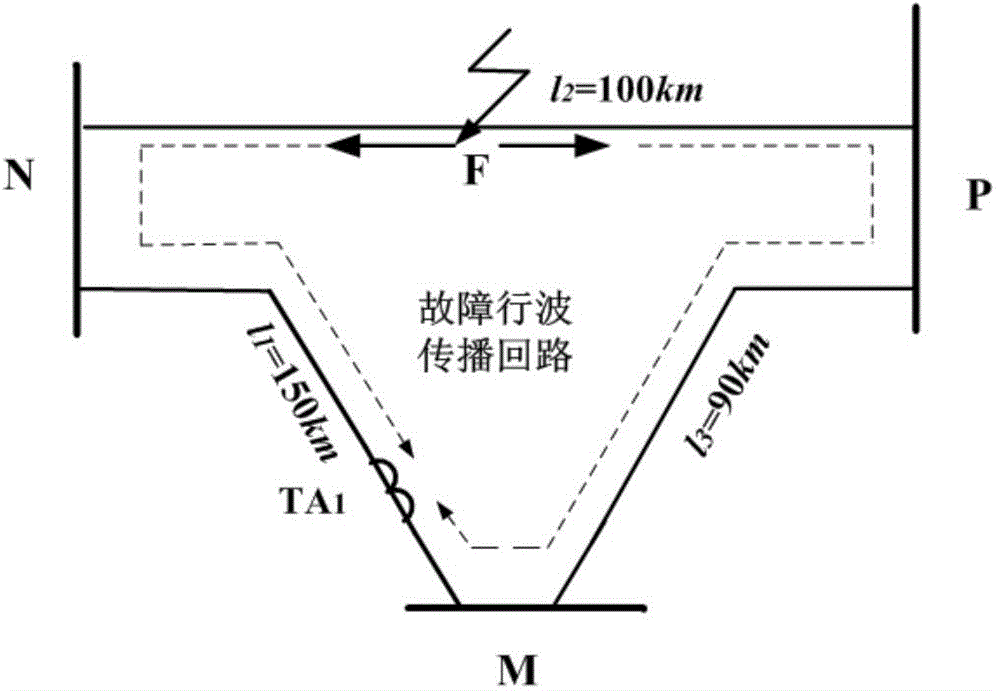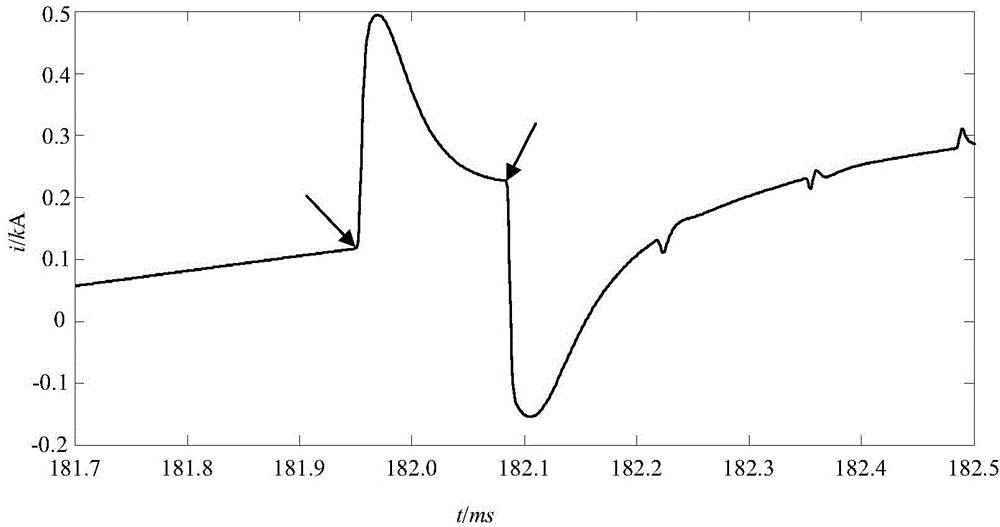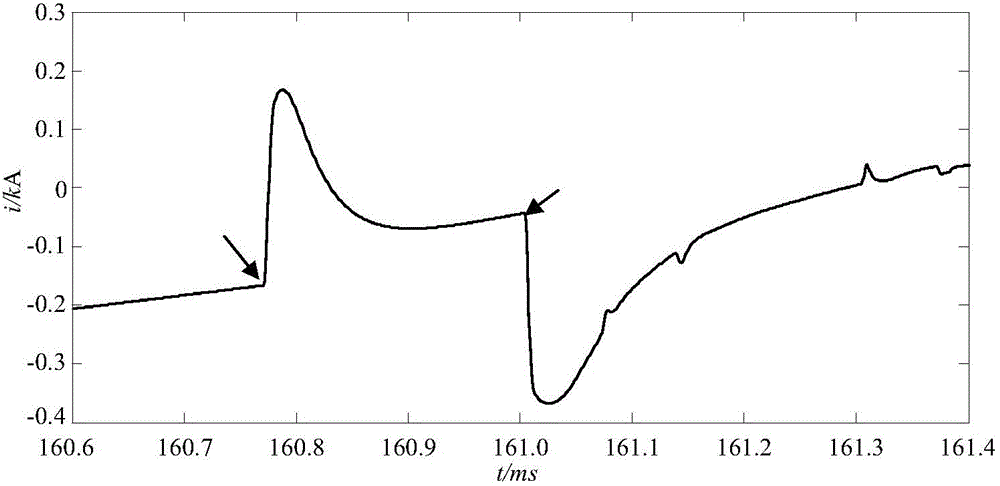Triangular looped network ranging distance continuation method
A triangular ring and range technology, which is applied in the field of triangular ring network ranging extension, can solve the problems of increased cost of ranging, unavoidable, and failure of fault ranging, and achieves the effect of accurate and reliable ranging results and simple principles
- Summary
- Abstract
- Description
- Claims
- Application Information
AI Technical Summary
Problems solved by technology
Method used
Image
Examples
Embodiment 1
[0031] Such as figure 1 In the triangular ring network shown, the three busbars are respectively M, N, and P, and the lengths of each line are: l 1 = 150km, l 2 = 100km, l 3 =90km. Assumed line l 2 A phase-to-ground fault occurs 40km away from the N terminal of the busbar. The initial angle of the fault is 90°, the transition resistance is 10Ω, and the sampling rate is 1MHz.
[0032] according to figure 2 The time corresponding to the first wave head of the two faults is found from the current traveling wave diagram shown as t 1 = 0.182081s,t 2 =0.181949s; find the first wave head time difference Δt=t 1 -t 2 =0.000132s, v is taken as the empirical wave velocity, and its magnitude is 2.98×10 8 m / s; finally use the formula (2) to calculate the fault distance x=(v·Δt-l 1 +l 2 +l 3 ) / 2=39.668km.
Embodiment 2
[0034] Such as figure 1 In the triangular ring network shown, the three busbars are respectively M, N, and P, and the lengths of each line are: l 1 = 150km, l 2 = 100km, l 3 =90km. Assumed line l 2 A phase-to-ground fault occurs at a distance of 55km from the N terminal of the busbar. The initial fault angle is 60°, the transition resistance is 10Ω, and the sampling rate is 1MHz.
[0035] according to image 3 Find the time t corresponding to the first wave head of the two faults from the current traveling wave diagram shown 1 = 0.161009s,t 2 =0.160770s; find the first wave head time difference Δt=t 1 -t 2 =0.000239s, v is taken as the empirical wave velocity, and its size is 2.98×10 8 m / s; finally use the formula (2) to calculate the fault distance x=(v·Δt-l 1 +l 2 +l 3 ) / 2=55.611 km.
Embodiment 3
[0037] Such as figure 1 In the triangular ring network shown, the three busbars are respectively M, N, and P, and the lengths of each line are: l 1 = 150km, l 2 = 100km, l 3 =90km. Assumed line l 2 A phase-to-ground fault occurs 70km away from the N terminal of the busbar. The initial fault angle is 60°, the transition resistance is 10Ω, and the sampling rate is 1MHz.
[0038] according to Figure 4 Find the time t corresponding to the first wave head of the two faults from the current traveling wave diagram shown 1 = 0.161052s,t 2 =0.160715s; find the first wave head time difference Δt=t 1 -t 2 =0.000337s, v is taken as the empirical wave velocity, and its magnitude is 2.98×10 8 m / s; finally use the formula (2) to calculate the fault distance x=(v·Δt-l 1 +l 2 +l 3 ) / 2=70.213km.
PUM
| Property | Measurement | Unit |
|---|---|---|
| Sampling rate | aaaaa | aaaaa |
Abstract
Description
Claims
Application Information
 Login to View More
Login to View More - R&D
- Intellectual Property
- Life Sciences
- Materials
- Tech Scout
- Unparalleled Data Quality
- Higher Quality Content
- 60% Fewer Hallucinations
Browse by: Latest US Patents, China's latest patents, Technical Efficacy Thesaurus, Application Domain, Technology Topic, Popular Technical Reports.
© 2025 PatSnap. All rights reserved.Legal|Privacy policy|Modern Slavery Act Transparency Statement|Sitemap|About US| Contact US: help@patsnap.com



